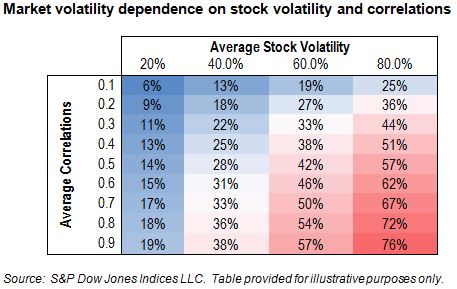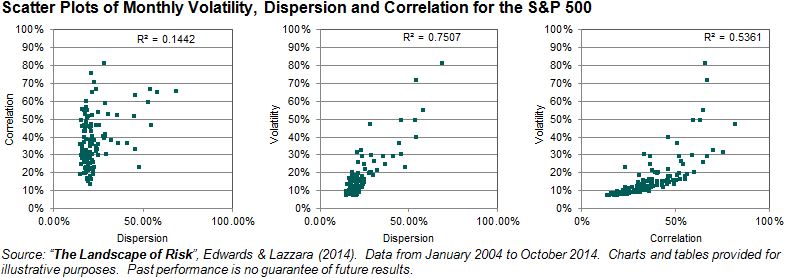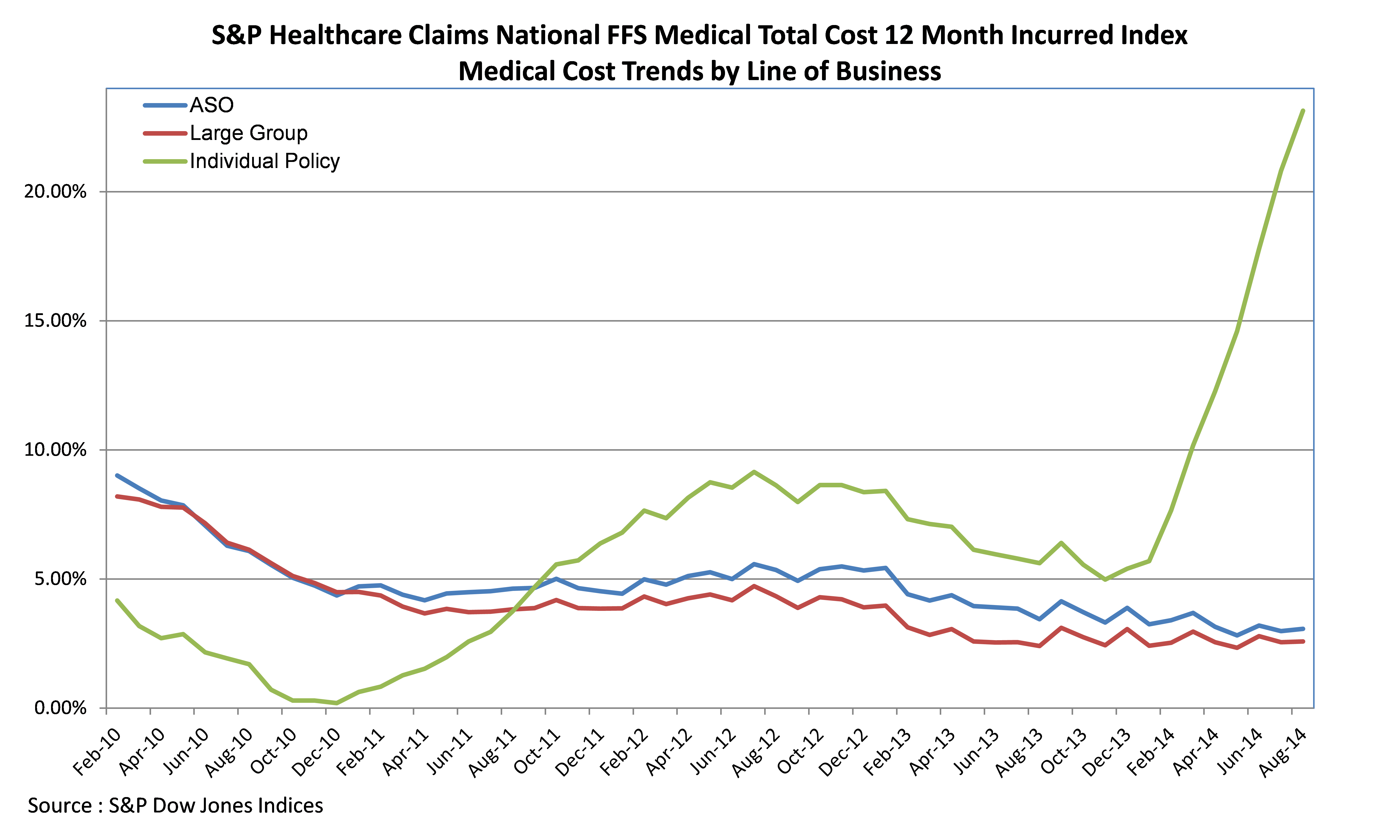Commodities are on track to post one of their worst years in history with the Dow Jones Commodity Index (DJCI) losing 17.3% and the S&P GSCI losing 32.1% through Dec. 29, 2014. According to the DJCI with data back to 1999, only 2001 and 2008 posted bigger losses, down 18.4% and 36.0%, respectively. In the longer history of the S&P GSCI with data back to 1970, 2014 is set to be the third worst year with bigger losses only in 1998 and 2008 when the returns were -35.8% and 46.5%, respectively. All sectors lost with the exception of livestock that gained 15.0% in the S&P GSCI and 16.6% in the DJCI.
However, what was unusual about 2014 is that despite the big negative total returns, the both the DJCI and S&P GSCI ended in backwardation for the year. In the history of the S&P GSCI, only twice before has there been two consecutive negative years, 1975-1976 and 1997-1998, but 2013-2014 is the first couple of consecutive negative years in backwardation. This is important in busting the myth that contango always yields a negative total return and backwardation always yields a positive total return. The spot market determines price return but the storage market determines roll return, so while linked are not perfectly correlated.
In the first half of 2014, 12 commodities, close to a record high of 16 commodities, were in backwardation, only to be followed by a summertime bust that brought the number down to four. Now, the pendulum has swung towards backwardation again bringing the number back to ten. This reappearance of backwardation shows the mean reverting environment of today that may indicate a turning point.
Following the two times of consecutive negative years, the S&P GSCI returned 115.9% (1977-80) and 111.0% (1999-2000). Further the returns after the years with the biggest losses were 134.8% and 185.0% post 2001 from the S&P GSCI and DJCI, respectively, and 23.7% and 47.9% following 2008 from the S&P GSCI and DJCI, respectively.
The biggest factors to watch influencing commodities for 2015 are likely the strength of the dollar, the geopolitical environment and Chinese demand. Rising interest rates and inflation, while maybe not an immediate concern to some have been historically good for commodities.
Let’s have a look back at the hottest commodity topics of 2014:
Top Ten Reader’s Choice:
1. BACKWARDATION IS BACK! 2013 is the first year commodities have been in backwardation since 2003. For those of you who need a refresher on the definition of backwardation, you are not alone, so here it is: “When a near-month futures contract is trading at a premium to more distant contracts, we say that a commodity futures curve is in “backwardation” or that the commodity is “backwardated.” This occurs when inventories of commodities are tight so market participants are willing to pay a premium to buy the immediate Read more […] – See more at: https://www.indexologyblog.com/?s=backwardation+is+back#sthash.BIUqx2dG.dpuf
2. COMMODITY COMEBACK It is no surprise that now might be the perfect environment for brewing commodities. The S&P GSCI was up 4.5% in February and was in backwardation for the first time in February since 2004. In 2004, the S&P GSCI returned 17.3%. 22 of 24 commodities in the S&P GSCI were positive in February. All 5 sectors were positive, led by agriculture, up 9.7%, which had its best February since 2008. Coffee had its best month in 20 years and its second best month in history going Read more […] – See more at: https://www.indexologyblog.com/?s=commodity+comeback#sthash.72R7wcht.dpuf
3. Global Inflation Beta It is a familiar concept that commodities have provided inflation protection as discussed in a recent post about a discussion I had with Bluford Putnam, Managing Director and Chief Economist, of our partner, CME Group, to discuss why inflation is likely to appear this year. I have also discussed how much inflation protection has been provided in a special video on commodities and inflation from our Index Matters Series with Bob Greer of PIMCO and Boris Shrayer (formerly) from Morgan Stanley. Inflation Read more […] – See more at: https://www.indexologyblog.com/?s=global+inflation+beta#sthash.IrsgIiLu.dpuf
4. How Smart Is Dr. Copper? Copper is reputed to have earned a Ph.D. in economics because of its ability to predict turning points in the global economy. This is since copper is so broadly used across industries from building construction, machinery, power generation and transmission, electronic product manufacturing and in transportation vehicles. As the demand for copper rises, its price likely increases and suggests a growing global economy. Conversely, declining copper prices may indicate sluggish demand and an imminent Read more […] – See more at: https://www.indexologyblog.com/?s=dr.+copper#sthash.Bl9rKT6f.dpuf
5. Dow Jones Commodity Index Wins Independence There could be no more symbolic time than just before the July 4th holiday for S&P Dow Jones Indices (S&P DJI) to announce the Dow Jones Commodity Index (DJCI), an alternative to the former DJ-UBS. This is the first ever commodity index under the Dow Jones brand to be fully free from conflicts of interest, plus it highlights diversification and liquidity as its intrinsic characteristics. Please see the table below summarizing the key differences between the DJCI and former DJ-UBS: What Read more […] – See more at: https://www.indexologyblog.com/?s=wins+independence#sthash.GRuVkVZw.dpuf
6. Natural Gas Is Backwardated And The Weather Is Backwards When I see a forecast of freezing weather, unlike most, I don’t think about how I will dress warmly or prepare for the cold. As a commodity lady, I think about how much the price of natural gas will increase. However when I saw this on TV yesterday, I had more food for thought than just the price of natural gas. Notice Friday’s high is listed as 18 degrees Fahrenheit (about -8 Celsius) while the low is listed as 19 degrees Fahrenheit (about -7 Celsius). I only chuckled for a moment before Read more […] – See more at: https://www.indexologyblog.com/?s=natural+gas+is+backward#sthash.ZTlHz9AT.dpuf
7. Brent Ousts WTI From Top Spot The S&P GSCI 2015 Rebalance Preview marks a historic shift in the benchmark renowned for its world production weight. According to this announcement of pro-forma weights, Brent crude oil is targeted take over WTI’s status as the leading oil benchmark and the most heavily weighted commodity in the S&P GSCI. This is the first time since 1997 that a commodity other than WTI crude oil is set to be the most heavily weighted. (Natural gas was greater at times from 1994-7.) In 1987, Read more […] – See more at: https://www.indexologyblog.com/?s=brent+ousts#sthash.KZTLQWUT.dpuf
8. What Is So Super About Chinese Demand? We have heard for many years now about the Chinese super-cycle that supported commodity prices since 1999 and we have also heard many debates about whether it has ended. So if it has ended what now? How huge is the impact on commodity prices? That all depends on the level of inventories that result from the combination of supply and demand. Theoretically if there were no inventories or supply, it wouldn’t matter how much Chinese demand fell. They could demand all they wanted but there would Read more […] – See more at: https://www.indexologyblog.com/?s=what+is+so+super#sthash.3FOiyvTf.dpuf
9. WARNING: Hot Coffee May Burn There are too many funny coffee jokes to single one out but this one I found seriously relevant: Though I take my coffee black, I also take it seriously since it is one of the commodities in the S&P GSCI and DJ-UBS. Coffee has been the best performing commodity this year, up 23.9%. As I mentioned in a prior post, Coffee is up since the consumption of coffee in China is expected to grow by an annual rate of 9% for the next five years. This is not only from China’s large population Read more […] – See more at: https://www.indexologyblog.com/?s=warning#sthash.09jSV3Ax.dpuf
10. Don’t Put All Your Eggs In One Basket It’s a little late for an Easter post but this saying is about one of the key investment principles, diversification. Simply put, diversification happens when assets inside your portfolio move in opposite directions. The investment measure of diversification is correlation and it can range from -1.0 to +1.0. If correlation is -1.0 between two assets, then they have moved exactly opposite each other; conversely, if the correlation is +1.0, then they move exactly together. Correlation of -1.0 is Read more […] – See more at: https://www.indexologyblog.com/?s=don%27t+put+all#sthash.MSAgzzAI.dpuf
Top Post From Seeking Alpha: The Scary Thing About Falling Oil Prices I don’t believe what the gas experts say, “that there is nowhere for gas prices to go but down.” After another bloodshed month for crude oil as evidenced by the S&P GSCI Crude Oil return of -10.9% in Oct, bringing it down 24.6% off its high on June 20, one might get excited about further savings at the pump. Save that excitement. The gas retailers are not looking to save any money for anyone but themselves. At least this is the story using data going back to 1991 from the EIA (U.S. Energy Read more […] – See more at: https://www.indexologyblog.com/?s=the+scary+thing#sthash.Kf5lMsTQ.dpuf
Top Post From LinkedIn: The Disparity Of Risk Parity The simple concept of risk parity is that within a portfolio, each investment contributes equally to the overall portfolio risk. For example, a portfolio with a capital allocation of 50% equities and 50% t-bills, has a risk profile where over 99% of risk comes from the equities. In a risk parity portfolio, if 50% risk (contribution to variance) were allocated each to equities and t-bills, the capital allocation looks more like 5% in equities and 95% in t-bills. As Blackrock published in a Read more […] – See more at: https://www.indexologyblog.com/?s=disparity+of+risk#sthash.80AqUmVW.dpuf
Top Media Pickup: Is Climate Change Impacting Your Grocery Bill? It doesn’t take a weatherman to point out the crazy weather we have experienced in the recent past. There are more severe droughts, storms, freezes and heat that many blame on climate change. The National Climate Assessment, that will drive Barack Obama’s environmental agenda, notes that average temperature in the US has increased by about 1.5F (0.8C) since 1895, with more than 80% of that rise since 1980. The last decade was the hottest on record in the US. What impact does this spike Read more […] – See more at: https://www.indexologyblog.com/?s=climate+change#sthash.HgFHRYhh.dpuf
Contributor’s Choice: Picking Factors Beats Picking Winners If you were to ask a few commodity experts what is going on with precious metals (like an attendee did at our 8th annual commodities conference), the answer is long-winded since the story is different for each commodity. A few years back, the answer was far more simple where it depended on the RORO environment that overpowered supply and demand models of individual commodities and spiked correlations. The quantitative easing caused all the commodities to move together, and the excess inventories Read more […] – See more at: https://www.indexologyblog.com/?s=picking+factors#sthash.OdgWbuMR.dpuf
The posts on this blog are opinions, not advice. Please read our Disclaimers.










